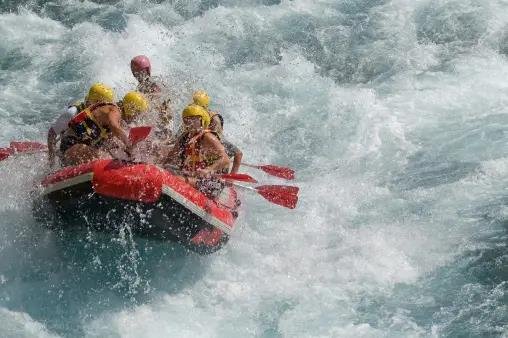Every paddler should heed the age-old adage, “Prevention is better than cure” but in the heat of the moment, all good intentions often fly out the window! When this happens and damage has occurred, treatment becomes the order of the day especially when you want to get back on the water, sooner than later.
Paddling or kayaking is a gruelling sport, particularly in the competitive arena. The risk of injuries is prevalent, ranging from dislocated shoulders to tendonitis and even the occasional sprained ankle. You can do your best to prevent paddling injuries but when they happen you need to get treatment such as from a Noosa physio as soon as possible.
Read on as we share ideas for preventing kayaking injuries and how to treat them when you can’t avoid them. With the right treatment, you can be back in shape and on the water for the next competition!
3 Ways to Prevent and Treat Paddling Injuries
1. Shoulder Sprains and Dislocations
One of the most common injuries suffered by canoeists, paddlers or kayakers is shoulder dislocations or sprains. Paddling through water, even if it’s calm, takes extreme muscular force which can result in painful shoulder sprains, strains or worse, dislocations.
Raising your arms with the elbow extended above your shoulders can stretch the ligaments and move the ball in the humerus out of the socket in the shoulder blade. This results in shoulder dislocation and this part of your body will droop while you experience intense pain.
Keeping your elbows low and tucking them in is essential, especially when bracing or doing a draw stroke, and will help prevent shoulder dislocation. Strengthening your shoulders with the right exercise or physiotherapy will prevent strains and sprains.
Treatment
Placing your arm in a sling or splint and getting to a healthcare practitioner as soon as possible is vital for the proper treatment of shoulder dislocations. Applying ice and immobilising the shoulder is important to reduce the pain of strains and sprains and visiting nqphysio.com.au for physical therapy with qualified physiotherapists will help heal the area.
Applying ice and immobilizing the shoulder is important to reduce the pain of strains and sprains, and visiting nqphysio.com.au for physical therapy with a qualified physiotherapist will help heal the area effectively.
2. Wrist Tendonitis
The perpetual movement of the paddles with the wrists can give rise to several joint problems. When the forearm muscles haven’t been used in a while wrist tendonitis is a common injury seen among paddlers at the beginning of a season. Using the wrong grip and old-fashioned paddles can give rise to inflammation of the tendons.
Choosing a paddle stick with less feather and using a lighter grip with minimal force helps to protect the wrist joints. Stretching your wrists before starting a physical activity helps to prevent the onset of wrist tendonitis.
Also, keeping up with forearm muscle exercise out of season means you’re ready to start a new kayaking season without causing wrist joint pain as soon as you paddle.
Treatment
The best treatment for wrist tendonitis is to rest and stop paddling until the inflammation settles down. However, if you can’t afford missing out on a competition, you’ll have to use anti-inflammatories to manage the pain.
Physiotherapy is another option for managing pain, reducing inflammation and healing the tendon. Wearing a wrist protective brace can relieve the pain.
3. Strained or Broken Ankle
You’re bound to be exhausted after a day of exciting but demanding competition on the water. This is when most ankle injuries take place as you carry your kayak or canoe on land. Taking a misstep can cause you to twist your ankle and strain it. In some cases, you can take a hard fall and break your ankle while portaging your canoe on land.
The best way to prevent these debilitating injuries is to take it easy while carrying your canoe. While this isn’t always possible in the heat of a competition, being aware of your surroundings will help avoid mishaps when you least need them.
Furthermore, strengthening your ankle muscles will help prevent injuries as will building bone strength with enough calcium and Vitamin D.
Different treatment plans will be recommended depending on the severity of the ankle injury.
Treatment
Find a place where you can sit and raise your ankle and apply compression. You need to rest it and use ice to manage the swelling. A broken or fractured ankle may require surgery and physio will help with injury rehabilitation.
Your doctor may prescribe medication to manage pain while a physical therapist can help you improve flexibility and balance while strengthening the ankle.
Final Thoughts
If you’re one of the 108,000 Australians in the 45 to 54-year-old age group participating in kayaking, you need to prevent common paddling injuries to enjoy the sport. It’s certainly not a gentle sport and protecting your body is vital if you want to keep participating.
Finding the right treatment as soon as possible is important if you’re unfortunate enough to end up with a shoulder sprain, broken ankle or wrist tendonitis. Booking an appointment with a physiotherapist trained to deal with such injuries will help you heal quicker while strengthening your body for the next kayaking experience.
















